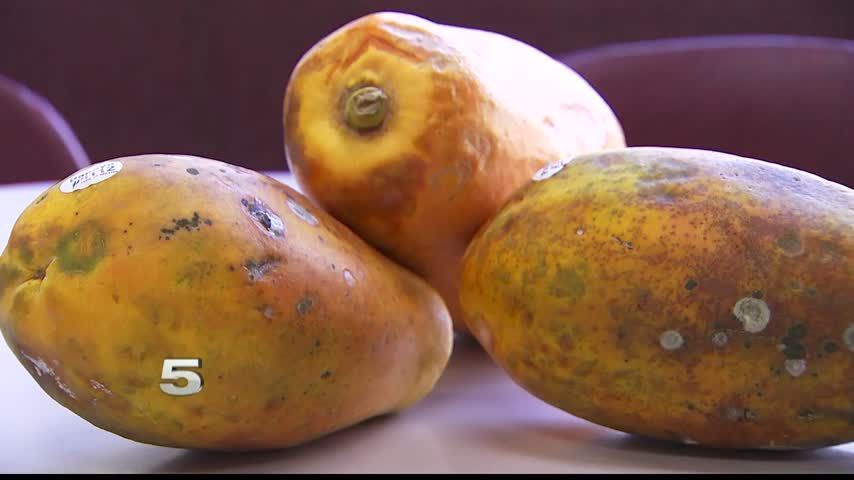Papayas Tainted with Salmonella Still Being Sold in Valley Flea Markets
WESLACO – They’re delicious and in season. Consumers are being urged not to eat papayas. They were recalled due to a salmonella outbreak affecting 19 states including Texas.
You may not see them on the shelves of big boxes. Yet, as CHANNEL FIVE finds out, you can get them just about anywhere.
Papayas can be purchased in flea markets and fruit stands around the Rio Grande Valley. They’re currently recalled due to an outbreak that has claimed a life in New York.
Weekends are ripe for shopping in the Valley markets, like one we visited to find the fleshy fruit, Maradol Papayas.
Walking through the tables, close to the end, a vendor stands by his produce offering.
KRGV’s Valerie Gonzalez asked, “Where does this papaya come from? It says here Mexico.”
The vendor responds, “I already threw out the boxes.” They may have the origin printed.
The vendor said he’s not sure where the fruit comes from. No receipt; no boxes; no proof. His reasons, “The inspectors were checking. If they left them, it must mean they must be good.”
Down by the flea market near the Hidalgo International Bridge, another vendor has papayas for sale.
When asked about the origin of the produce, the vendor replied, “I wouldn't be able to tell you.”
Flea markets are not the only ones selling this currently forbidding fruit. A fruit stand in Progreso is also carrying the product.
The vendor said, “The inspector comes and checks and says it’s okay.” He pointed to a health permit and said, “If they don’t have this inspection, don’t buy there.”
Vendors operating outside regulations can unwittingly be a frugal consumer’s downfall.
In this case, salmonella could be found in these papayas. Vendors couldn’t identify their origin. Without a place of origin, it’s impossible to know what’s in the food we’re eating.
Dr. Mariano Salinas, a family practitioner, said it’s impossible to be able to know whether your fruit has it just by looking at it. He said fruit can become contaminated in two common ways.
“They are washing (it) with contaminated water; or, when they are growing (it), they are irrigated with contaminated water,” stated Salinas.
Salinas adds this bacterial infection can cause nausea, upset stomach, and diarrhea. Some will suffer severe consequences.
He explains, “When that salmonella gets aggressive, it can give you typhoid fever. That you can have fever, explosive diarrhea with severe dehydration. If you don't got to the hospital to have IV fluids or something, you can even die.”
The CDC reports three brands have been identified: Caribeña, Cavi, and Valery Maradol papayas. More could be added to the list later.
If anyone doesn’t know where their papayas came from, the CDC said don’t eat, sell or serve them. Just throw them out.
Tips from the CDC can be found in the following link: https://www.cdc.gov/salmonella/kiambu-07-17/advice.html




